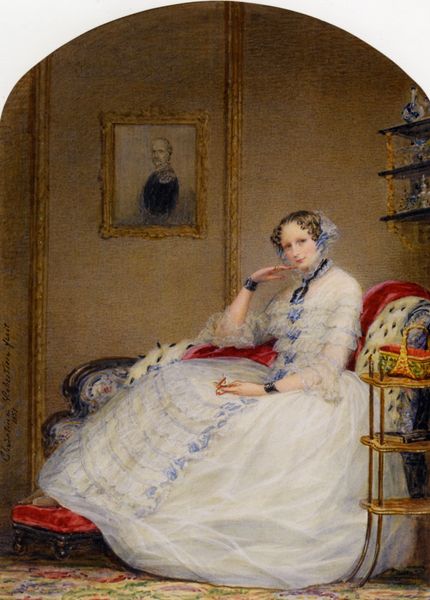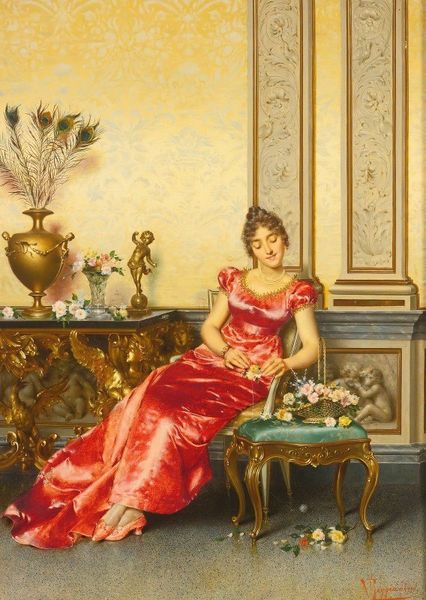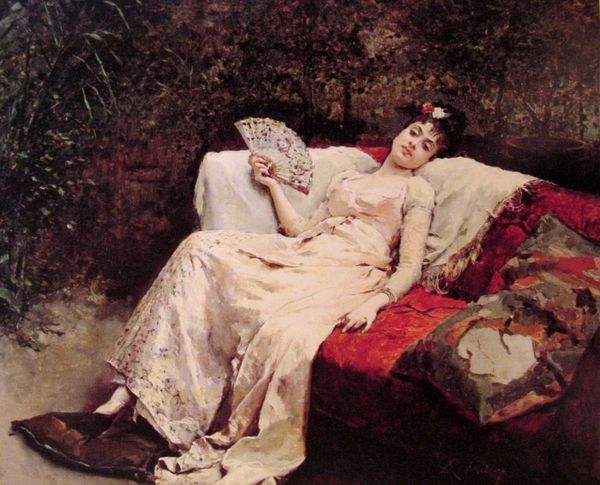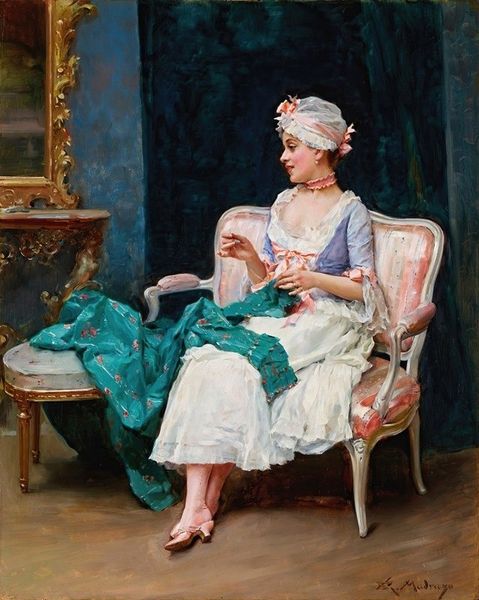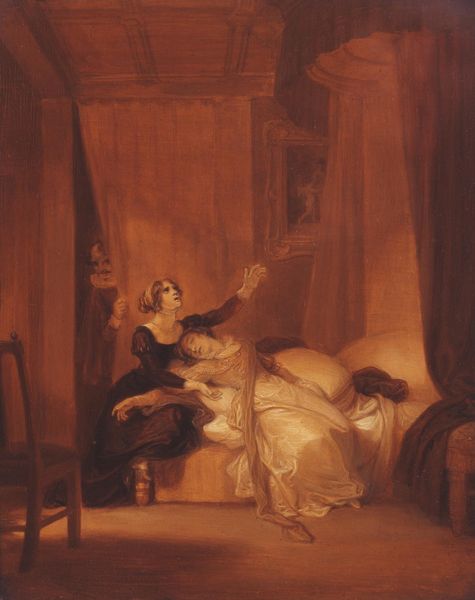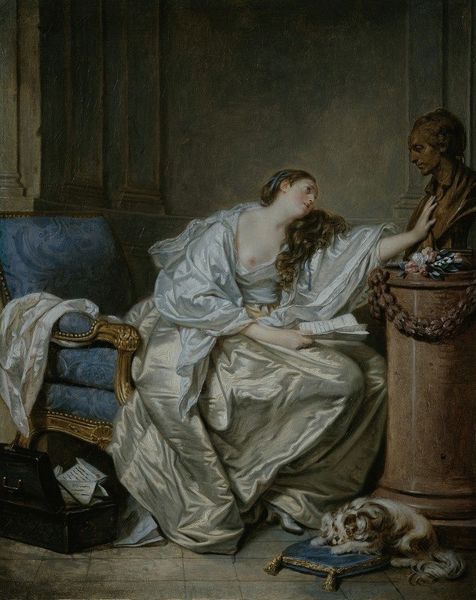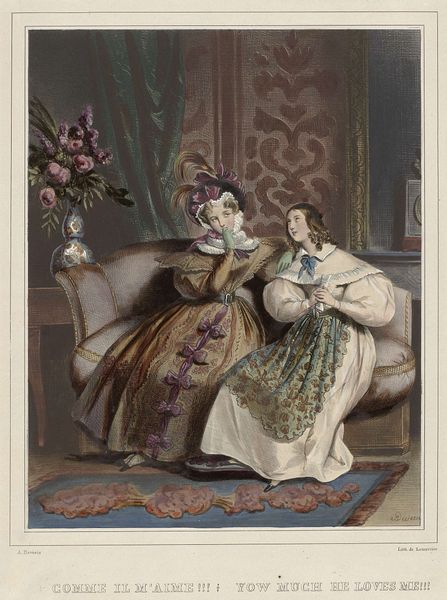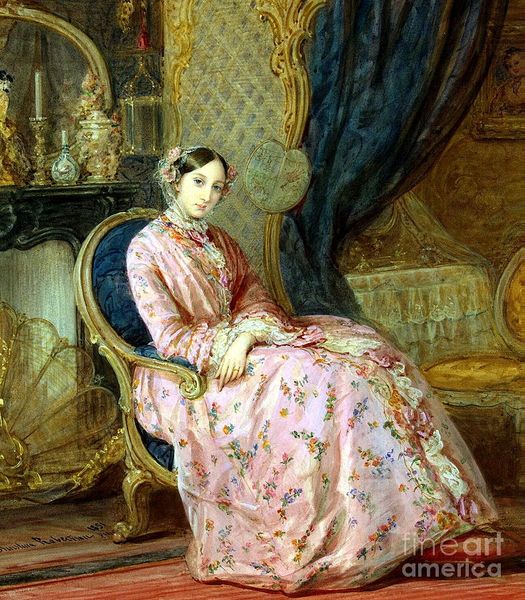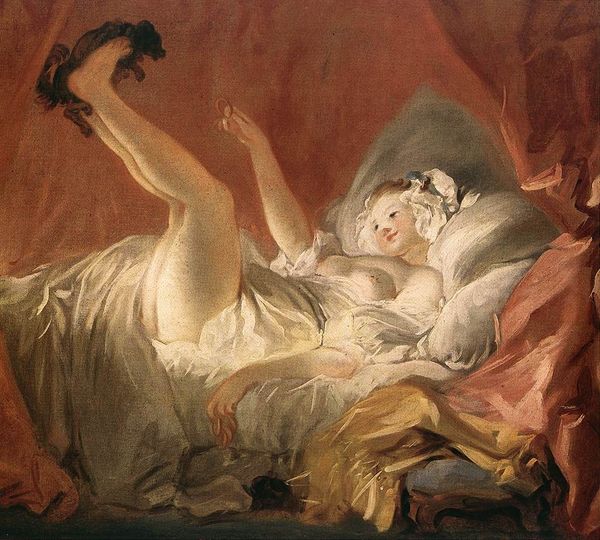
painting, oil-paint
#
portrait
#
painting
#
oil-paint
#
oil painting
#
intimism
#
underpainting
#
genre-painting
#
portrait art
#
rococo
Copyright: Public domain
Editor: So, this is François Boucher’s “Portrait of the Artist's Wife,” created around 1743 using oil on canvas. There’s a kind of dreamy indolence to it. How do you interpret this work, especially considering its Rococo style? Curator: The indolence you mention is key. Boucher, deeply steeped in Rococo sensibilities, presents us not just with a likeness, but with a potent symbol of leisure and status. Notice the abundance of fabric, the delicate textures… how do these details speak to you? Editor: Well, all that expensive, frilly fabric certainly signals wealth, but it also feels almost…confining? Is there some kind of message embedded there? Curator: Precisely! The trappings of luxury can simultaneously offer comfort and create a gilded cage. Consider the period's fascination with ornamentation. What emotions or psychological states might that obsessive decoration reflect? Are they simply decorative, or are they concealing something? Editor: That’s fascinating. It suggests maybe more is happening beneath the surface than I initially thought, that even beauty itself can become a symbol with multiple meanings. Curator: Absolutely. Think of the elaborate coiffures of the period, the carefully constructed poses – all carefully designed visual cues. It shows us that symbolism can exist on multiple layers, doesn't it? And its constant transformation in meaning according to context and time. Editor: I see what you mean. Thanks, that's given me a totally new way of appreciating Boucher. Curator: Indeed. By delving into these historical symbols and their layered significance, we’re better equipped to perceive not just with our eyes, but also with our intellect.
Comments
No comments
Be the first to comment and join the conversation on the ultimate creative platform.
